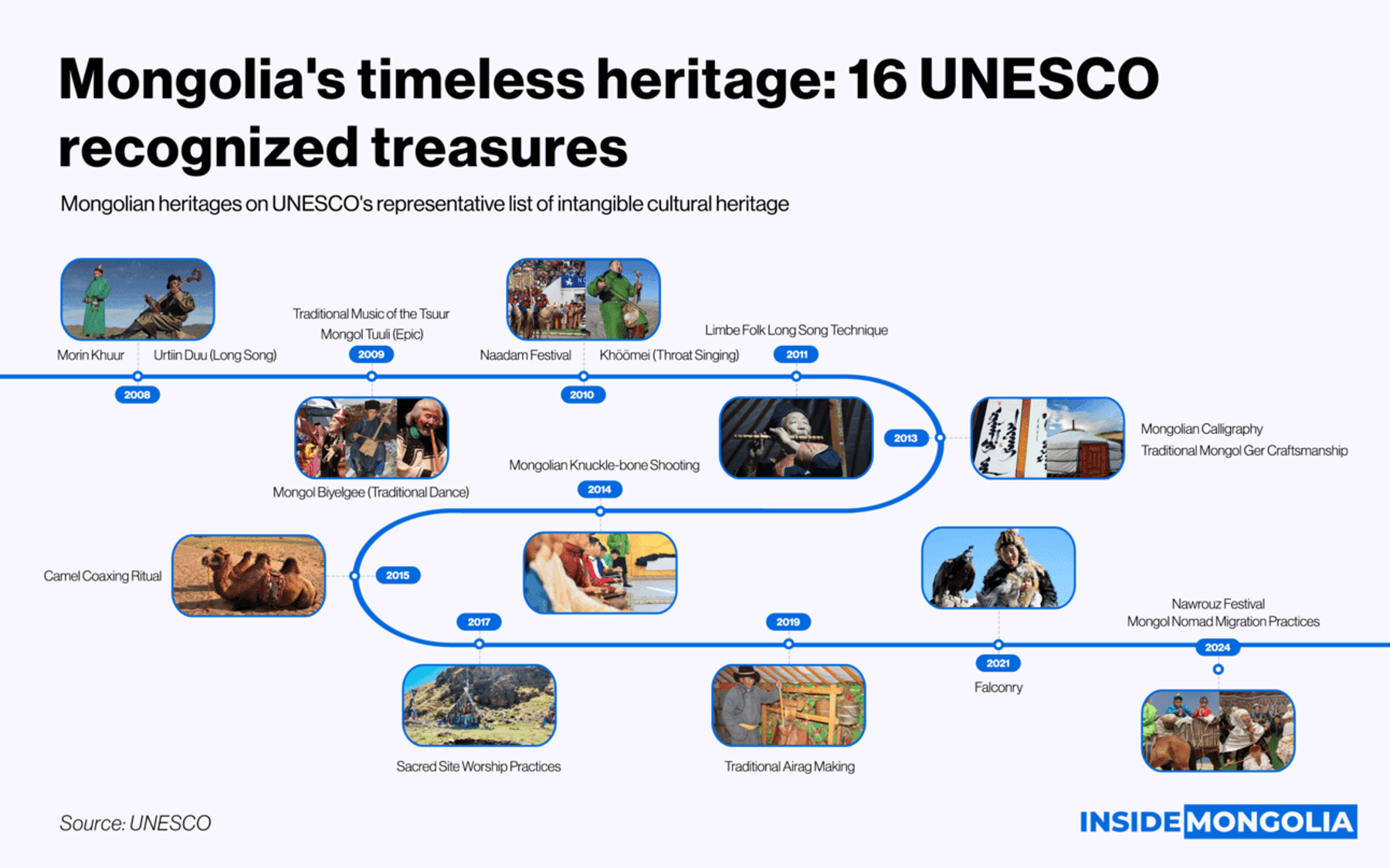Mongolia's Heritage: New Additions and Shared Traditions
Khulan M.
December 9, 2024
December 9, 2024

Mongolia’s cultural heritage gains global recognition, with the recent inclusion of “Novruz” on UNESCO’s Representative List of the Intangible Cultural Heritage of Humanity. This addition, alongside Mongolian Nomadic Rituals, marks the 17th heritage from Mongolia to be inscribed. The Mongolian Nomadic Rituals involve a complex system of traditional knowledge, including practices for migration routes, livestock herding, and environmental protection, all of which reflect Mongolia's deep-rooted nomadic traditions.
🏆 Achievements in UNESCO's Heritage Listing
Since Mongolia joins the 2003 UNESCO Convention for the Safeguarding of Intangible Cultural Heritage, it registers 17 cultural practices between 2008 and 2024. Of these, 10 are in the Humanity category, and 7 are in Need of Urgent Safeguarding.
🧑🤝🧑 Cross-Border Heritage
However, it is crucial to recognize that Mongolia's rich heritage is not limited to its national borders. Many practices originating from Mongolia are also claimed by neighboring countries. Nomadic culture, including migration and herding methods, is shared with China, particularly in Inner Mongolia, where these traditional practices continue to shape daily life. Similarly, horse culture, an iconic aspect of Mongolian identity, is deeply rooted in both Turkey and Kazakhstan, countries with historical ties to Mongolian Turkic ancestors.
🤔 Challenges in Preserving and Celebrating Shared Heritage
The shared nature of these cultural practices presents challenges in preserving and celebrating them exclusively as Mongolian traditions. As Mongolia seeks to safeguard and promote its cultural heritage on the global stage, it must navigate the complexities of heritage overlap with its neighbors. This global safeguarding involves acknowledging the distinctive Mongolian origin of these practices while recognizing their interconnectedness with other nomadic cultures across Central Asia.
Overall, Mongolia continues to collaborate with UNESCO and international partners, ensuring the protection and celebration of its unique cultural heritage while addressing the challenges posed by the cross-border nature of these traditions.
Comment